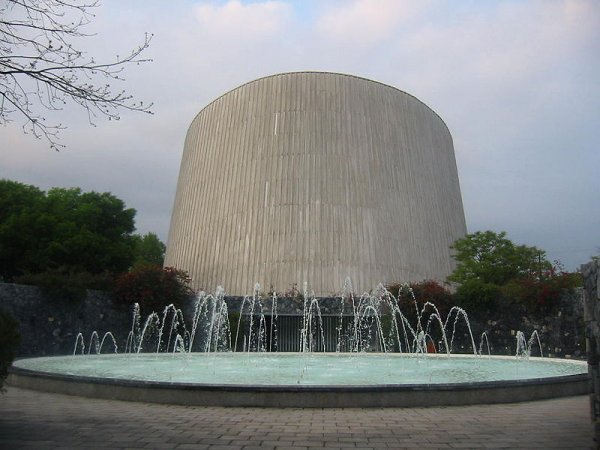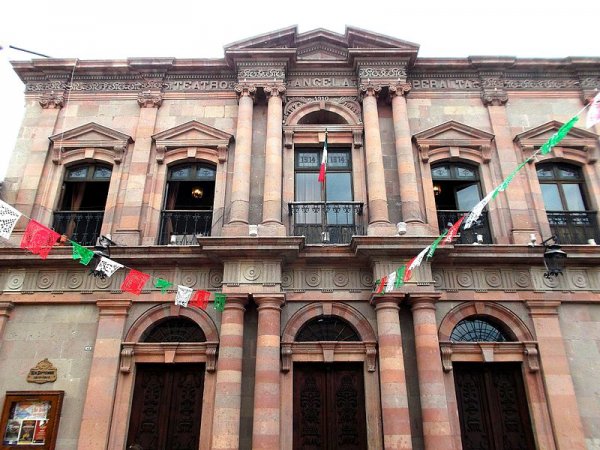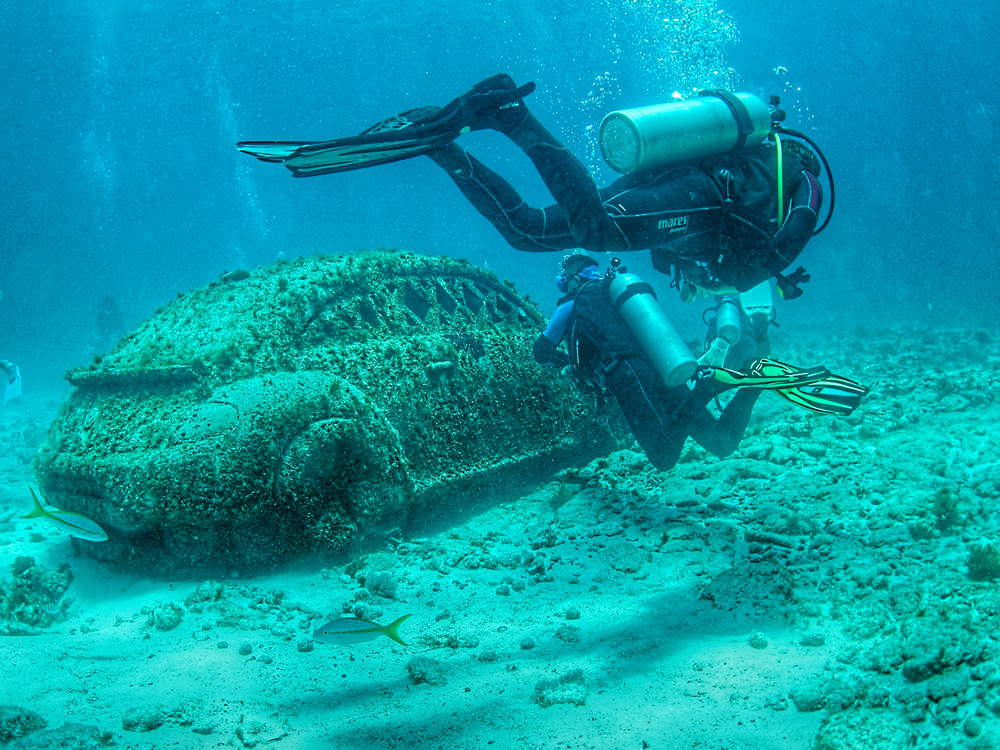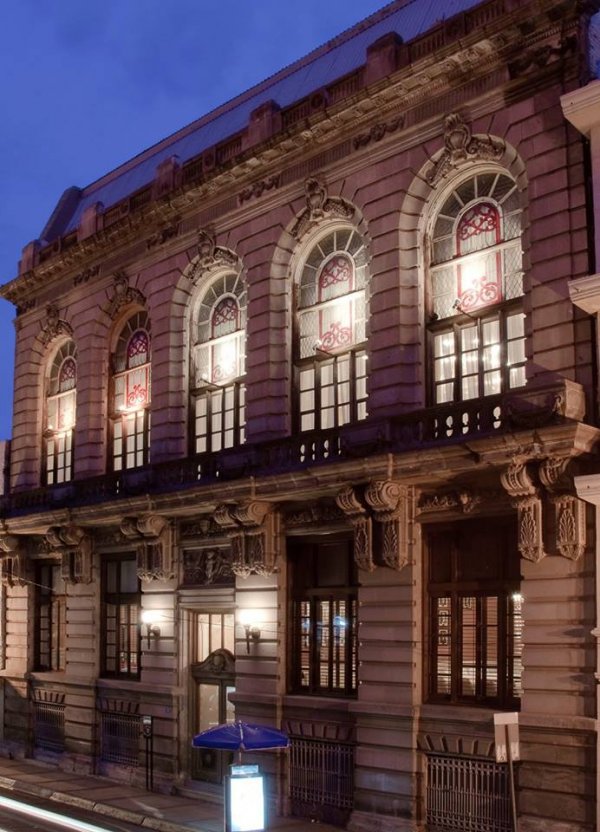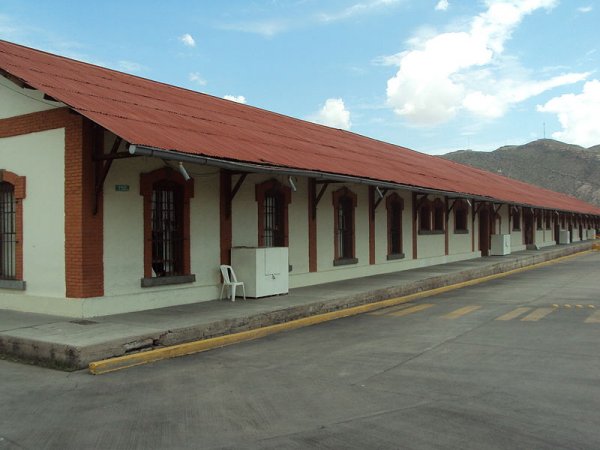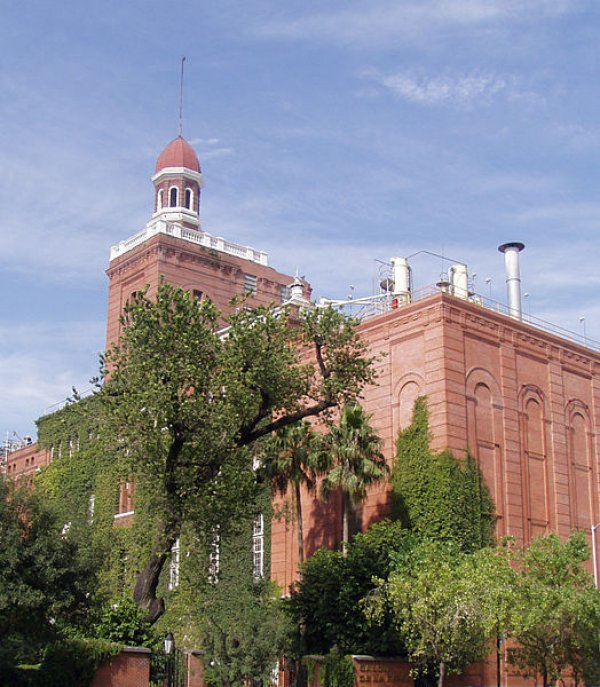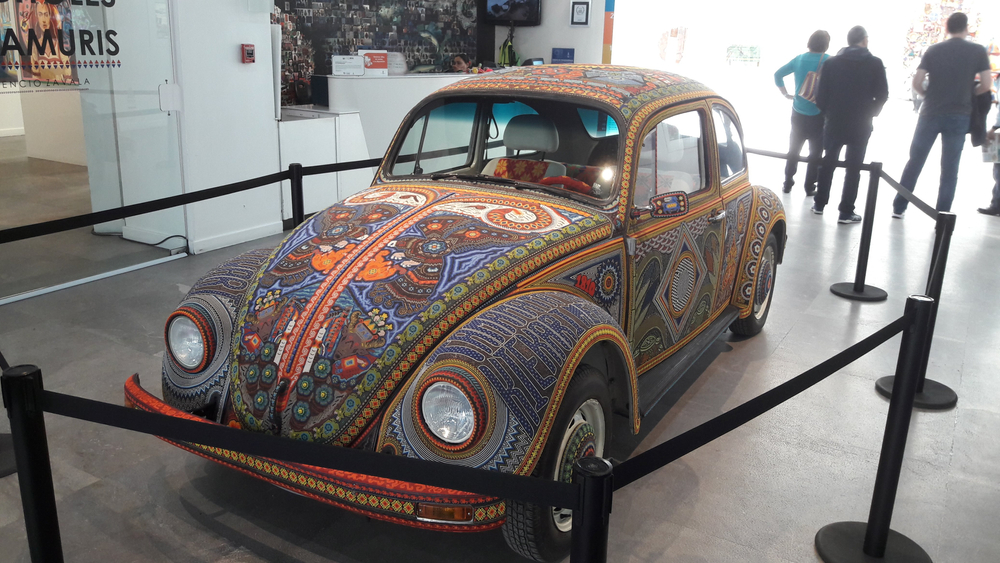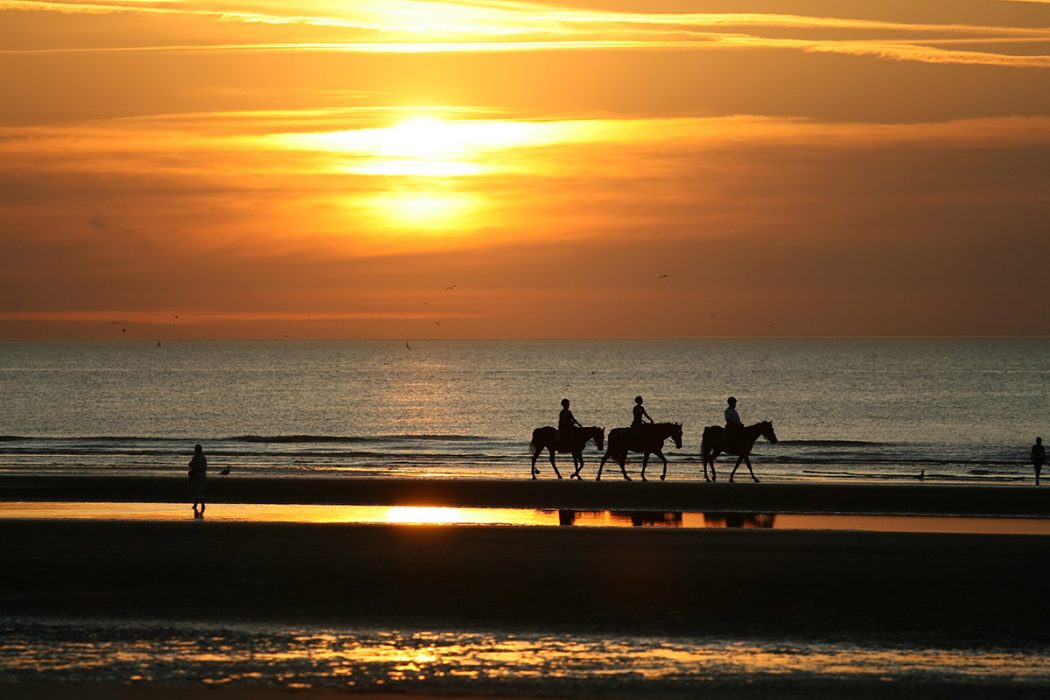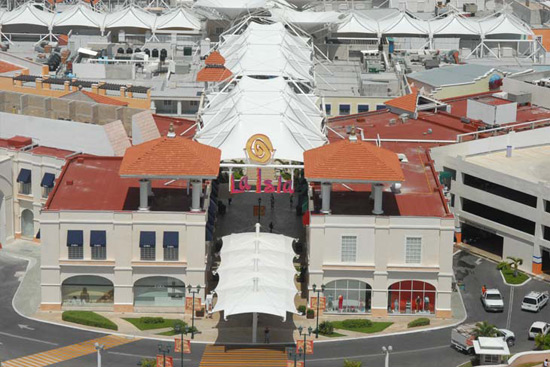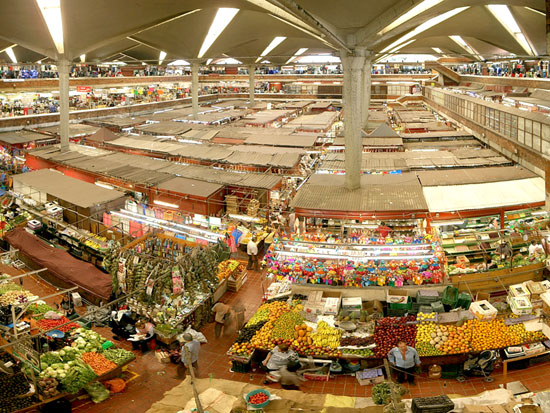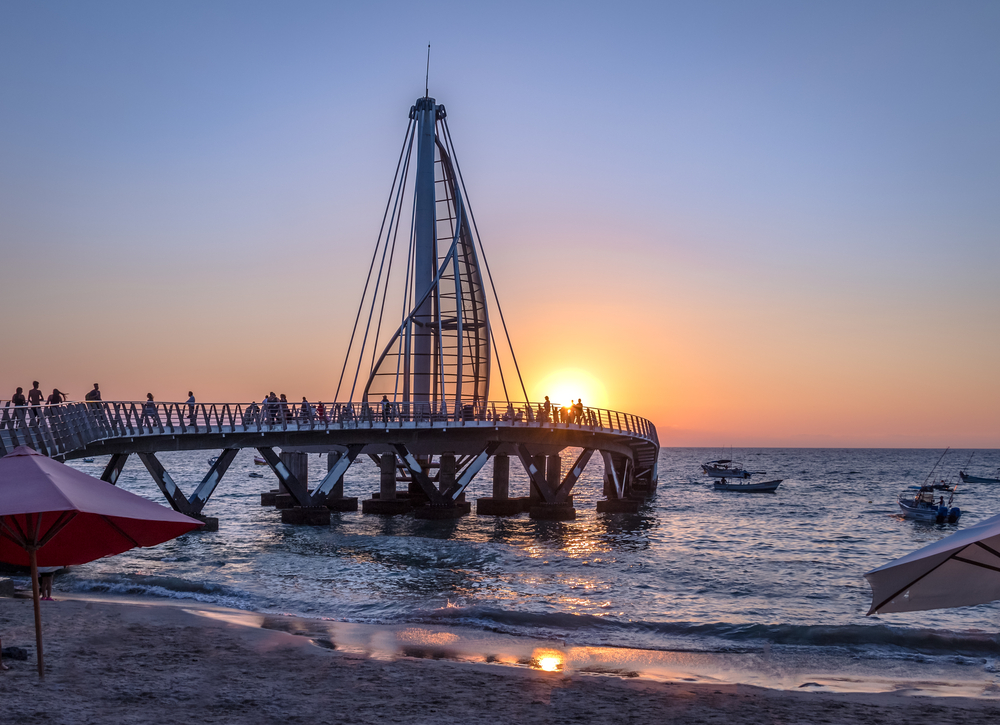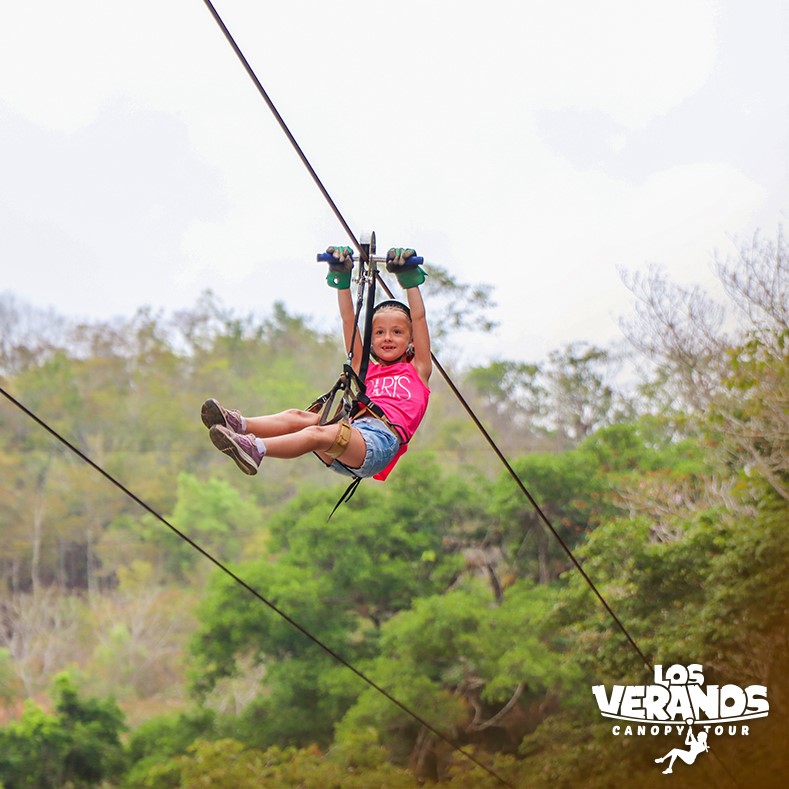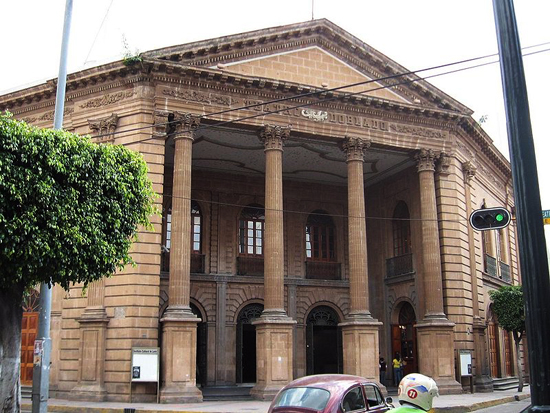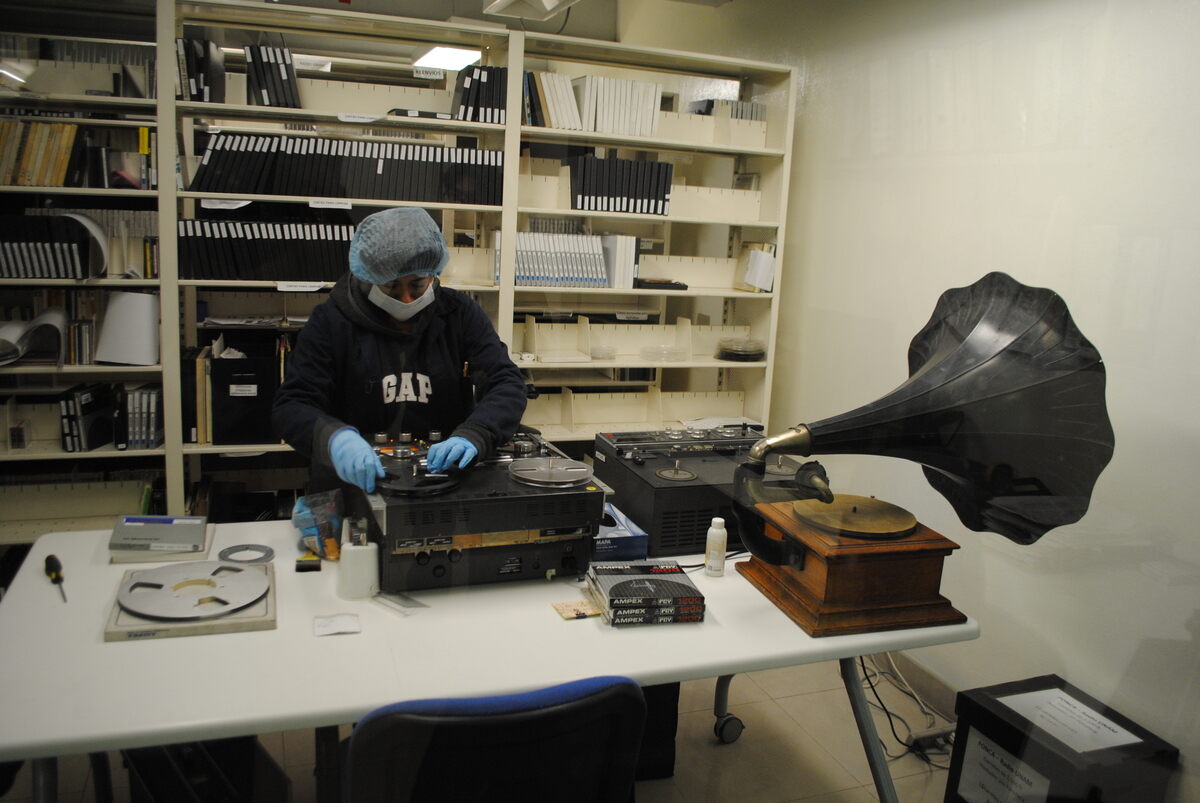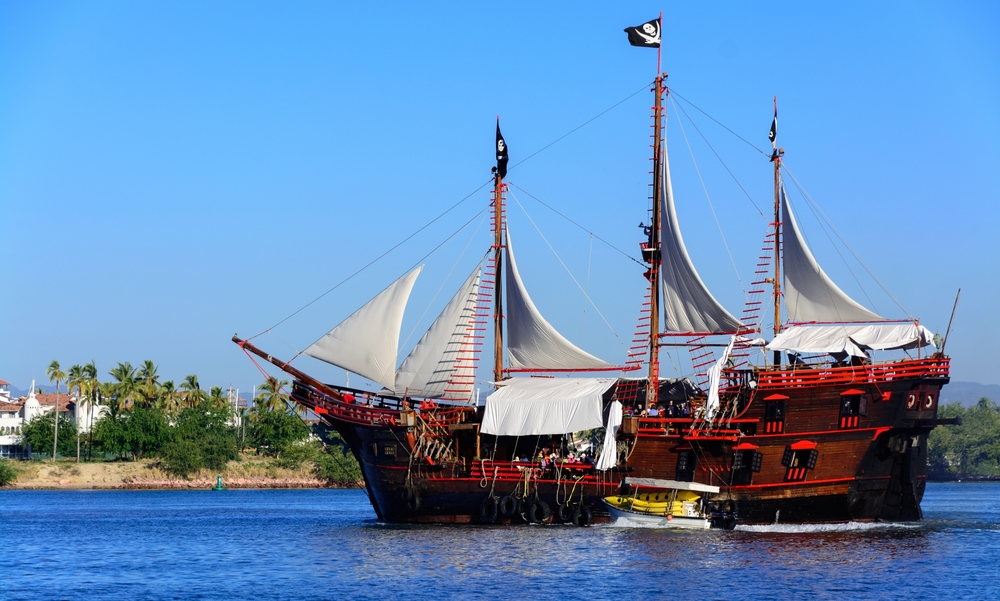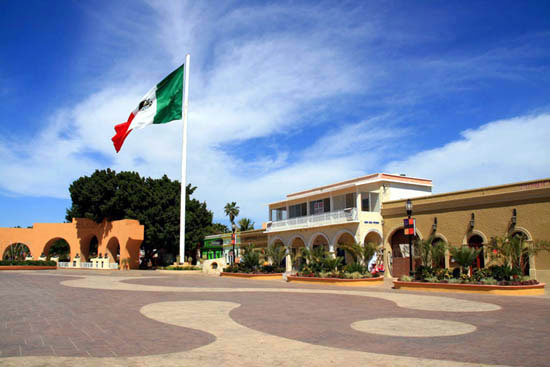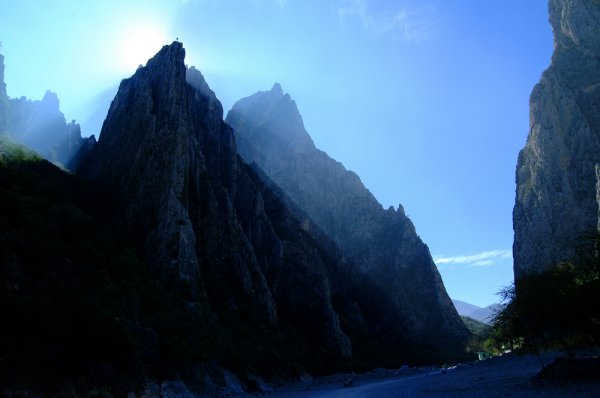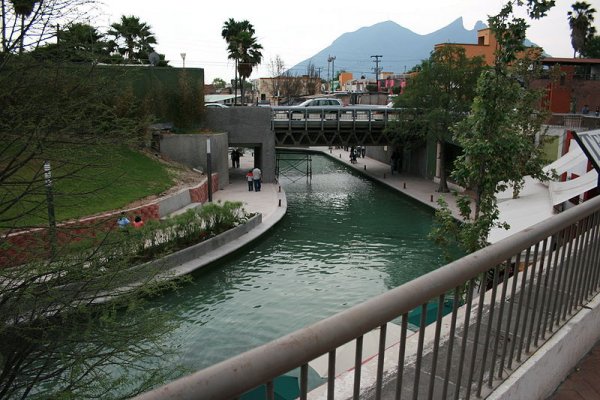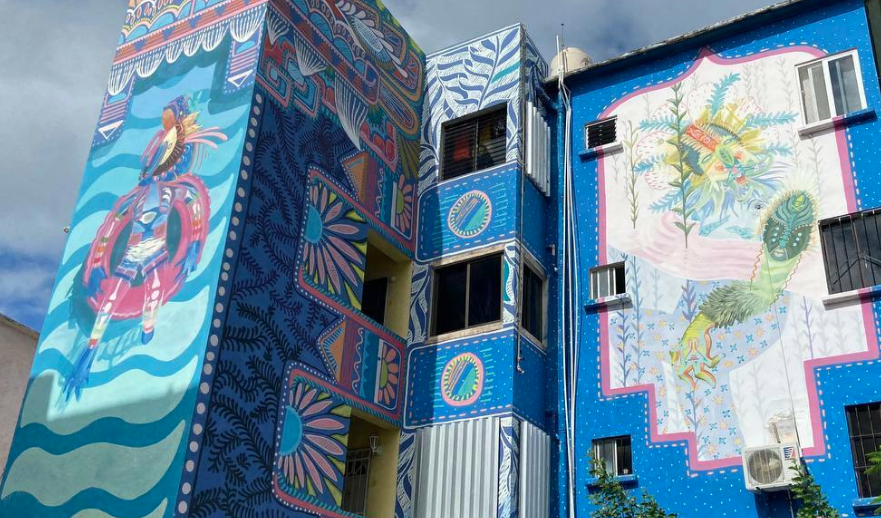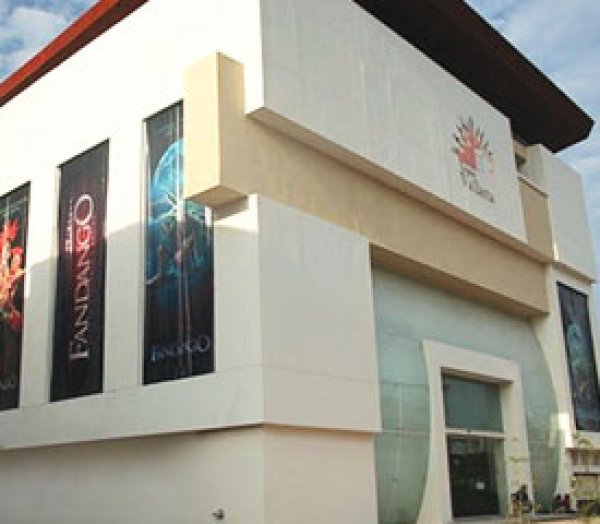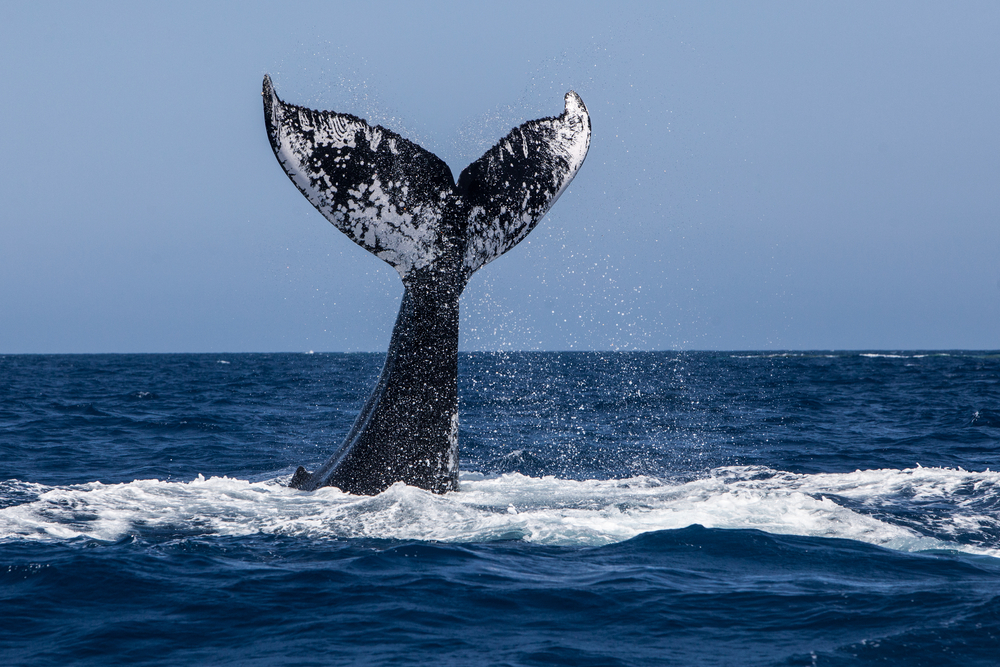Points of Interest
Alfa Planetarium
Planetario Alfa 1000 Garza Sada Avenue
Carrizalejo, Monterrey, Mexico
The many attractions and activities at the Alfa Planetarium make it an excellent place for a family to spend the day. It boasts a museum with an aquarium, an interactive science exhibit, and a large collection of Mexican artifacts as well as an IMAX theater. The complex's Universe Pavilion holds a giant stained-glass window depicting the universe, made by Oaxaca native Rufino Tamayo. Hours of operation are from 2:30 to 8 p.m., Monday through Friday and 11:30 a.m. to 8 p.m. Saturday and Sunday. On weekends, events and demonstrations occur every hour between noon and 8 p.m. Check the website for the current IMAX schedule and science demonstrations.
Angela Peralta Theatre
Avenida Miguel Alemán #203
Mazatlan, Sinaloa 82000, Mexico
Originally built around 1870, this theater is the most prominent cultural center in town, which hosts theater, music, opera, and dance performances. The theater was completely refurbished in 1880 into a luxurious, comfortable, and elegant building with 15 colored stages. In 1883, renowned Mexican soprano Angela Peralta arrived in Mazatlan to perform at the theater, but she died of yellow fever contracted during her boat journey. In honor of the diva, the theater was renamed after her. From the middle of the 20th century, the theater fell into ruin, with the final blow coming from Hurricane Olivia. Extensive restoration work followed, and the theater is presently a state-of-the-art facility that showcases art performances of high value.
Cancun Underwater Museum
Museo Subacuático de Arte, or MUSA Km 18 Kukulcán Boulevard, Hotel Zone
77500 Cancún, Mexico
Scuba divers will enjoy Cancun Underwater Museum, also called MUSA, though there are other ways to see the underwater sculptures. About 500 sculptures were created by British sculptor Jason deCaires Taylor and five Mexican artists, and each sculpture or group of sculptures has a different meaning and name that depicts a specific theme. MUSA has two galleries, the Salon Manchones and Salon Nizuc. Salon Manchones is best for divers, with sculptures sitting between 8 to 10 meters (26 and 33 feet), while Salon Nizuc is best for snorkeling, with sculptures sitting at 2 to 4 m (6.5 to 13 ft). The sculptures create an artificial reef for local sea life as well. You can snorkel here though the views will be from above only, Glass bottom boat tours are offered as well.
Chihuahua Casino
Casino de Chihuahua Victoria 314
Chihuahua, Mexico
Established in 1881 as a private gambling and social club for the city's business and government leaders, today this exquisitely designed beaux arts building is generally regarded as the most handsome building in Chihuahua. It's used primarily for conferences, banquets, and business and social gatherings.
Chihuahua City Theater
Teatro de la Ciudad de Chihuahua Manuel Ojinaga Calle Jose Maria Morelos 106
Centro Chihuahua, Mexico
This theater occupies an extravagant former movie palace, Cine Colonial, which the city acquired in 2000 and converted to a space for live performances. The facade of the 882-seat theater, which opened in 1947, features a colorful 6-meter-tall (20-foot-tall) recessed art deco mural over the main entrance. The venue maintains a regular program of shows by both local and touring music, dance, and theater groups. Presentations range from Broadway musicals to folklore extravaganzas to concerts by popular Mexican and Latin American singers and musicians.
Chihuahua Music Conservatory
Conservatorio de Música de Chihuahua Manuel Doblado 4501
Chihuahua, Mexico
Founded in 1997, the conservatory is located in a former railroad station. It offers training in 13 music disciplines. The school sponsors a symphony orchestra, adult choir, children's choir, chamber music groups, and a Latin American music group.
Cuauhtémoc Moctezuma Brewery
Av. Alfonso Reyes #2202 Nte. Col. Bella Vista
Monterrey, Mexico
A group of investors founded the Cuauhtémoc Brewery in Monterrey in 1890, making it the oldest brewery in Mexico. The brewery produced its first beer, Carta Blanca, in 1893. Shortly thereafter, it took first place in the Chicago and Paris world fairs. Although it has gone through many changes and is currently owned by Heineken International, the brewery still produces some of the most popular Mexican beers, like Dos Equis, Sol, Indio, and Tecate. Recently, the brewery installed a new system to treat and save water. Historic brewing equipment is on display in a beer garden where visitors can sample a beer of their choice. Guided tours of the factory are available Monday through Friday from 9am to 4:30pm and Saturday from 9am to 1:30pm
El Rey Ruins
Km 18 Kukulcán Boulevard, Hotel Zone
77500 Cancún, Mexico
El Rey is one of the most important archaeological sites on Cancun Island. Although it originated as a small settlement in early times, it was in the late Postclassic (1200–1550 CE) era that it reached its most important stage of growth. It is believed that El Rey, along with nearby San Miguelito, formed the core area of a town dedicated to maritime trade and fishing activities. The archaeological interventions carried out on the site have made it possible to visit many of the structures lined up along the main road and its two small squares. The most important building is number 2, which consists of a pyramidal base with a temple, in which at least two construction stages are observed. Also of interest are buildings 1 and 4, which are palaces with large galleries with colonnades that supported flat roofs. Due to their size, they seem to be administrative buildings, in which meetings were held between the ruling groups.
– Information provided by the Government of Mexico
El Vochol
Revillagigedo 11
Colonia Centro, Mexico City, Mexico
Any fan of Mexican folk art will want to plan a visit to El Vochol. The art piece, a Volkswagen Beetle covered in over 2 million colorful beads, was created to blend modern Mexican culture with the traditional folk art of the country’s Huichol people. Huichol art is intricately made from tiny seed beads and includes mythical and historical symbols along with geometric designs and patterns. Displayed at the main entrance of the Museo de Arte Popular, El Vochol was created in 2010 with the help of two Huichol families and includes nearly 2.3 million beads and reflectsmore than 4,000 hours of work. Overall, it’s a dazzling display depicting native Mexican gods including those for the sun, deer, corn, and fire along with images of peyote flowers, a shaman paddling a canoe, and scorpions, birds, lizards, and other regional animals. The name El Vochol blends the Mexican word for beetle (vocho) with Huichol, and as the car is displayed in the lobby of the Museo de Arte Popular, you don’t need to buy a ticket into the museum to see it.
Horseback Riding
Puerto Vallarta, Mexico
There are several companies in Puerto Vallarta offering horseback riding, you’ll just need to decide if you and the family would like to explore mountainous trails, a quiet fishing village, or swim in a waterfall. Most riding is available through ranches located on the outskirts of town, offering a special way to connect with nature and create a memorable family experience. Plan for a half day of activity with gentle horses and patient guides who will reassure and teach the basics. Among the choices are Rancho El Charro (www.ranchoelcharro.com) and Vallarta Adventures (www.vallarta-adventures.com/en/tour/sea-safari-and-horseback-riding). There’s also Moreno’s Horseback Riding, located at Calle Cenzontle # 582 in Puerto Vallarta–call +52 1 322 205 4121 for more information.
Interactive Aquarium
La Isla Interactive Aquarium La Isla Shopping Mall, Kilometer 12.5 Kukulcan Boulevard
Cancún, Mexico
Swim with dolphins, feed sharks, learn about the ecology of the coral reef system, and touch the residents of local tide pools at Interactive Aquarium. It is located in the heart of the Zona Hotelera at La Isla Shopping Mall. The aquarium itself also hosts dozens of the denizens of the deep on display including stingrays, medusas, scorpion fish, and piranhas.
Liberty Market
Mercado Libertad Avenida Javier Mina esquina Calzada Independencia
Centro Guadalajara, Mexico
Also known as the Mercado San Juan de Dios (St. John of God Market), this is the largest public market in western Mexico. There's very little you can't find here. The cavernous structure contains warrens of stalls selling everything from clothes and shoes to kitchenware and home decor. Vendors can be quite aggressive, but bargaining is the order of the day.
Los Muertos Pier
Francisca Rodriguez 121, Emiliano Zapata
48380 Puerto Vallarta, Mexico
Featuring a sleek, contemporary design reminiscent of a sailboat, Los Muertos Pier is a draw for all members of the family. With its long reach out into the ocean, a walk along this stretch offers expansive views of both nature and the urban waterfront of Puerto Vallarta. There is plenty of people watching to enjoy, and the area is popular for parasailing. Come for the day, remembering to bring swimsuits and toys for the long sandy beach. The El Centro area surrounding the pier is a funky district offering cool shops, restaurants, and strolling entertainers. This also is the spot where boats depart for the area’s southern beaches, with options to snorkel, dive, and venture out on a fishing charter located here as well. For perhaps the most memorable experience, plan for a nighttime visit when the pier is lit up and includes rotating colored spotlights. The views of the city’s sparkling lights and shimmering ocean reflection will be unforgettable.
Los Veranos Canopy Tour
2735 Francisco Medina Ascencio Boulevard, Hotel Zone
48333 Puerto Vallarta, Mexico
If you and the family are up for some adrenaline-inducing fun, check into a Los Veranos Canopy Tour. They start with a speed boat ride across the bay before 15 ziplines send you zooming high above both jungle and river. The Black Diamond cruises 152 meters (500 feet) over the trees and reaches 48 kilometers per hour (30 miles per hour). Bilingual guides assist and reassure, keeping the focus on having a great time. After the thrills, refresh in the Los Horcones River, which includes built-in water slides and small pools to dip in. Kayaking is another refreshing choice. Then stroll through the animal sanctuary and enjoy a meal at the Riverfront Restaurant, with their tequila bar another way for adults to taste authentic Mexico.
Malecón Boardwalk
Paseo Díaz Ordaz S/N
48300 Centro Puerto Vallarta, Mexico
Get a firsthand taste of the local culture by spending a few hours walking along the beach on the lengthy boardwalk called the Malecón. At nearly 1.6 kilometers (1 mile) long, it covers 12 blocks. The curvy seaside strip is a colorful area in more ways than one—from the surrounding palm trees, shops, and restaurants to the entertainers who inhabit the area. There are outdoor sculptures along the way, made by renowned artists, while the nearby beach is likely to include impressive sand sculptures too. Various performances take place at the open-air Los Arcos amphitheater, and even if there’s not one scheduled, the sun provides a nightly show when it sets.
Manuel Doblado Theater
Teatro Manuel Doblado Calle Pedro Moreno 202
León, Mexico
This neoclassical theater within a French-influenced structure features well-known plays and hosts art exhibitions. Originally inaugurated in 1880, the theater features horseshoe-shaped balconies and a glass dome over an interior courtyard and fountain. It's named in honor of Manuel Doblado, former military general and governor of the state of Guanajuato. It once served as the campaign office for President Porfirio Diaz's reelection in 1910. It was also a horse stable for revolutionaries, a cinema, and even at one point a public parking lot. The theater experienced a rebirth in 1979, after it was remodeled and re-inaugurated as a cultural and artistic forum.
Murals of Centro SCOP
Xola
Mexico City, Mexico
Colored stones from throughout Mexico come together to form intricate murals, at Centro SCOP. It will seem odd to discover that the exteriors of the complex’s abandoned buildings are covered in the murals, which depict traditional imagery from the country’s native cultures. The overall theme of the murals is the history of communications in Mexico, and the buildings were once the headquarters for the Secretariat of Communications and Public Works (SCOP). Song to the Homeland and Fire are among the murals that cover about 6,040 square meters (65,000 square feet), some created by renowned Mexican artists. Unfortunately, two earthquakes that occurred 30 years apart rendered the main building unsafe and employees of the renamed Ministry of Communications and Transport were relocated. The fate of the murals is less clear and some have been removed and relocated or placed into storage. There were plans to relocate the murals to a new city airport before public outcry called for the removal to stop. So the murals, with their images of nuclear energy, radio waves, old TV boxes, and 1950s-era cars, remain to be pondered and admired, though for how long is the question.
National Sound Library
Avenida Francisco Sosa 383
Santa Catarina, Mexico City, Mexico
The sound memory of a culture gives an account of its evolution; their beliefs, speech modes, rhythms, and sound environments that represent and shape their identity are encrypted in it. Registering, cataloging and disseminating this material is a fundamental task to understand and value its vitality. One of the commitments of the Mexican State is the preservation and safeguarding of the cultural heritage of the country. The sound heritage is a fundamental part of that heritage and an essential element of national identity and memory. In response to this commitment, the National Sound Library was created to be in charge of the investigation, registration, conservation, and dissemination of the sound heritage of Mexico, derived from both live experiences and the phonographic and radio tradition. Exhibitions include works by sound artists and the outdoor Sound Garden is equipped with a high-quality multi-channel audio system for the enjoyment and listening of concert music, pieces of sound art, experimental compositions and poetic works.
– Information provided by National Sound Library
Neptune Plaza
Plaza Neptuno Francisco Medina Ascencio y Paseo de la Marina Marina Vallarta
Puerto Vallarta, Mexico
This modest shopping plaza overlooks the entrance to the Puerto Vallarta Marina with a 6-meter-tall (20-foot-tall) statue of Neptune, Roman god of the sea, standing guard from his perch on the building's roof. The semi-naked god, complete with trident, has become one of the city's relatively few man-made landmarks. The building itself is designed somewhat like a cross between an Aztec temple and a Spanish mission, with a stone facade rising as a quasi-pyramid topped by an arched bell tower. At ground level, a life-sized statue by Puerto Vallarta artist Octavio Gonzalez of a humpback whale and its offspring splits the Paseo de la Marina into separate lanes.
Palenque
Near the Usumacinta River Palenque
Chiapas, Mexico
This archaeological site contains some of the finest architecture, sculptures, roof combs, and bas-relief carvings of the Mayan civilization in Mexico. The site was the capital of the Mayan Empire during the Classical period and reached its zenith between 500 and 700 CE. The Mayan Ajaw (ruler), K'inich Janaab' Pakal, is credited with reviving the city's art and architecture and for rebuilding Palenque between 615 and 683 CE. The funerary temple dedicated to him preserves lengthy inscriptions and sculpted reliefs that reveal the complex history, mythology, and ritual practices of the Mayan Classical period.
Paseo del Estero
San José del Cabo, Mexico
If you are looking for a good place to take a stroll, the Paseo del Estero, located by the estuary near the corner of Benito Juárez, makes an excellent choice. This palm-studded pedestrian walkway parallels the main Boulevard Mijares all the way to the Zona Hotelera. In colonial times, pirates used this route between raids on the Spanish galleons. Today, it's a great way to travel between downtown and the hotel area for those seeking a more peaceful walk. Be advised, however, that high water levels sometimes make the Paseo impassable, particularly after it rains.
Pirate Ship Vallarta
Avenue Politecnico Nacional No. 78
Puerto Vallarta, Mexico
Your littlest kids may get the most fun out of this adventure, held aboard an authentic wooden Spanish galleon. Crew are outfitted in pirate attire and there’s a show with music and dancing along with games and activities. But even if you’ve got tweens and teens, there’s still plenty of fun offered, including swimming and snorkeling on a private island. Your time on Majahuitas Island includes options to kayak, take a banana boat ride and tour, play beach volleyball, and take part in a treasure hunt. Ticket prices include food and adults will find the open bar an added bonus. Even fireworks accompany nighttime tours. See the website for operating hours and tour options, which include day and night choices. Plan for a full day, as tours last about six hours.
Plaza Mijares
San José del Cabo, Mexico
Exuding a relaxed, friendly air, San José del Cabo's Plaza Mijares is one of the most traditional town squares you'll find in this region. In the evening, local families flock to this square for social hour, young children on tricycles wheel about while others play kickball, and still others wander, seemingly without parental supervision. Balloon vendors woo children and menudo stands lure in hungry adults both day and night. Local bands storm the square's small stage, especially on the weekends. This gorgeous and lively square, lined with colorful historic buildings including the Iglesia San José, and with ancient trees, small shops, and eateries, is a supremely pleasant place to spend a while.
Potrero Chico
Sierra Madre Oriental 825 Antiguo Camino a Potrero Chico
Hidalgo, Leon, Mexico
El Potrero Chico is a world-class climbing facility with well over 500 developed routes, some of which exceed 610 meters (2,000 feet). The amazing range of altitudes and limestone strata attracts both amateurs and experts from all over the world. Hidalgo, the nearest town, is refreshingly untouched by the tourism industry, and a sense of harmony exists between the climbers and the locals.
Santa Lucia Riverwalk
Paseo Santa Lucia Dr. Coss 445 Sur
Monterrey, Mexico
A 2.5-kilometer-long (1.5-mile-long), 1-meter-deep (4-foot-deep) artificial river runs from the Macroplaza and Museo del Historia Mexicana to Parque Fundidora. Along Santa Lucia Riverwalk, visitors pass 24 fountains and beautiful architectural accents and bridges. One must-see sculpture is the Inuksuk (a type of stone landmark found mostly in Canada) built by artist Bill Nasogaluak and a gift from the Canadian Chamber of Commerce to Nuevo León. For those who don't want to sweat in the Mexican heat, boat tours of the river are available. The river begins at a large, circular fountain that cascades from a hole cut in the plaza to the river below. The paseo is well-illuminated and open to the public 24 hours a day. It was completed in 2007 and is considered one of the 13 manmade wonders of Mexico.
Sculptural Space
Espacio Escultórico National Autonomous University of Mexico
Avenida Universidad 3004
Mexico City, Mexico
The Espacio Escultórico has much to recommend a visit, not least of which are the 74 massive stones that form a ring with a diameter of 120 meters (393 feet). Representing a pre-Columbian worldview, the ring encloses a rugged volcanic stone landscape that resulted from eruptions of the Xitle volcano. Built atop the broader landscape is the central campus of the National Autonomous University of Mexico, for which the Espacio Escultórico serves as an outdoor art space. Six abstract sculptures are located within the ring structure, some having native names for animals including snakes, birds, and scorpions. Some of the sculptures are carved from the area’s volcanic stone while others have geometric shapes rendered in metal and painted in bright hues including pink, orange, and blue. The outdoor sculpture space with its unique landscape and art is just one part of the university, which is recognized by the United Nations Educational, Scientific and Cultural Organization (UNESCO). The campus is a World Heritage Site, with UNESCO recognizing that “the campus constitutes a unique example of 20th-century modernism integrating urbanism, architecture, engineering, landscape design and fine arts with references to local traditions, especially to Mexico’s pre-Hispanic past.” A visit to Espacio Escultórico is a good introduction to these topics and sure to interest everyone from art lovers and engineers to students of history.
Street Art Tour
Downtown Cancun, Mexico
Street art is on the rise in Cancun and viewing the array offers a colorful and engaging way to spend a few hours. Large murals can be found on the following streets: Avenida Bonampak, Calle Lopez Portillo, Avenida Uxmal, Avenida Nader, and Avenida Yaxchilán. Grab a snack or drink and stroll the area, taking in scenes that include animal and marine life and native people. Some murals are realistic and highly detailed while others seem dream-like and surreal, like the depiction of dolphins in a gumball machine.
The Dove Bullring
Plaza de Toros La Paloma Avenida Francisco Medina Ascencio
Puerto Vallarta, Mexico
Don't let the name fool you. There's nothing dovish about Plaza de Toros La Paloma. Like the people of Spain and the rest of Mexico, Vallartans enjoy real bullfighting where the ultimate goal is killing the bull. There is considerably less grandeur here than in the world's largest bullrings, but the basic format remains the same, with picadors, toreadors, and matadors playing their appointed roles in the bloody spectacle. Only for the strong-hearted, the season runs from December through May.
Vallarta Theater
Teatro Vallarta Uruguay 184 Colonia 5 de Diciembre
Puerto Vallarta, Mexico
Until the completion of this 960-seat theater in 2010, the city had no space suitable to host major dance, drama, and musical performances. Created in the shell of a former movie theater, the facility incorporates the latest technology in lighting, audio, and theater mechanics. The stage measures 25 meters (88 feet) by 9 m (29 ft), with a 42-square-meter (450-square-ft) LED display behind. In addition to visiting and temporary shows, the theater has developed the ongoing presentation Fandango, which translates traditional Mexican dance into a very modern, high-tech performance.
Whale Watching
Bahía de Banderas (Banderas Bay)
Puerto Vallarta, Mexico
Skim the waves of Puerto Vallarta’s Banderas Bay seeking some of Earth’s largest creatures—whales. From December through March, and perhaps even earlier and later depending on water temperatures, humpback whales come to the area to mate, give birth, and raise their young. The gentle giants break through the water’s surface, called breaching, out of play and for exercise. The experience of seeing whales leaping and slapping the water with their fins is unlike any other. Several companies in Puerto Vallarta offer whale watching tours, most running for four hours at a time. Some have underwater microphones that capture the songs of whales as they call to each other. You also are likely to see dolphins and other aquatic mammals while on the water. There’s no guarantee you’ll see whales breaching, but the likelihood you will is greatest in January and February. Just having a family boat ride while taking in the sweeping views of the ocean and city skyline will be a memorable experience. Among the companies offering tours are Vallarta Natours (www.vallartanatours.com), OceanFriendly (www.oceanfriendly.com), and EcoTours de Mexico (www.ecotoursvallarta.com).
Copyright © 1993—2025 World Trade Press. All rights reserved.

 Mexico
Mexico 